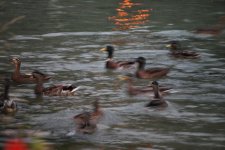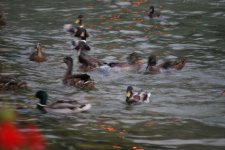
Hi, I'm a bit confused with this duck. Found in the Steinhorster Becken near Paderborn, Germany I assumed it was a Garganey until s opened it's wings. According to the Collins 2nd Ed. it should have a greyish brown speculum surrounded by white. This looks very much like a Mallard on the speculum and has whitish tail sides. The bill is grey and fits Garganey better. Is it a hybrid?
Thanks very much for you help!
Thanks very much for you help!






